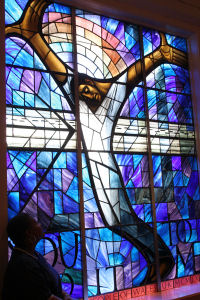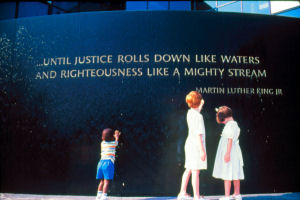Must See Civil Rights Attractions for History Students
The history of the Modern Civil Rights Movement in America is a dramatic story of the struggle for freedom and equality. Social studies teachers looking to take their students on the road to re-enforce classroom instruction should visit these sites in Birmingham, Montgomery and Selma, Alabama.
These are the must see attractions at each destination:
The Birmingham Civil Rights Institute: Your students can “take a walk through history” at this state-of-the-art facility designed to be a self-directed journey through the Civil Rights Movement of the 1960’s. The museum features photography and audio recordings from the era, multi-media presentations, and dramatic life-size figures.
The Sixteenth Street Baptist Church is located adjacent to the Civil Rights Institute. Just days after a six-year battle ended in favor of integrating the Birmingham schools, the church was bombed by Klansmen. Four young girls preparing for Sunday school in the basement were killed. A docent will guide you through the church and you will watch a video on the history of the dramatic bombing.
The Civil Rights Memorial Center in Montgomery: Designed by international artist Maya Lin, the center honors 40 individuals who died between 1954 and 1968. In front of the museum is a black granite table with the names of the martyrs, chronicling the history of the movement in lines that radiate like the hands of a clock. Water emerges from the table’s center and flows evenly across the top. On a curved black granite wall behind the table is engraved – “We will not be satisfied until justice rolls down like waters and righteousness like a mighty stream” Dr. Martin Luther King Jr.’s well-known paraphrase of Amos 5:24.
The Rosa Parks Museum is located just a few blocks from the Memorial Center. The museum features multi-media presentations, period photography and several dioramas depicting the life story of Rosa Parks and the Montgomery Bus Boycott. The tour begins with a short video on the events leading up to Rosa Parks arrest for refusing to relinquish her seat on a city bus to whites. Next, students are taken back in time to a reenactment of the actual event via a vintage municipal bus. The remainder of the tour chronicles the 381 day city-wide bus boycott.
The Lowndes County Interpretive Center can be found at the midpoint of the National Historic Selma-to-Montgomery Trail where the famous Selma to Montgomery March occurred. Student visitors can view a video of the events that occurred on “Bloody Sunday” in Selma and see artifacts from the ensuing march in the “Tent City” exhibit.
Selma is just a few miles from the interpretive center and all student groups should relive history by walking across the Edmond Pettus Bridge. This is the bridge where 600 peaceful protesters were attacked by mounted deputies and state troopers on what came to known during the Civil Rights era as “Bloody Sunday.”
For information on the Modern Civil Rights Experience or other student tours please visit:







